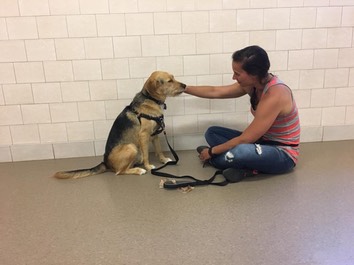
Humans are born with the gift of complex thinking. We have the ability to analyze a situation, recognize a problem, and address it with creative solutions. It is one of the reasons why we are one of the most dominant life forms on the planet. We have never been the biggest, the stongest, the fastest, nor the most resilient, but our ability to rationalize and think outside the box has been a huge advantage for us.
Just because I say “we have the ability”, does not mean "we always use it".
It truely baffles me, when it comes to training our dogs how often owners get mired in the problems. Owners often attempt one or two solutions. When these do not work, owners often repeat them again and again expecting different results. It makes me think about the old adage “what is the definition of insanity?”
I have said throughout these blogs that a key component in dog training is opening the lines of communication. It is one of the cornerstones of my training program. When effective communication is happening, the learning rate increases exponentially. I admit, sometimes solutions can be difficult to see. In the heat of the moment, especially when an owner is frustrated with their dog’s obnoxious behaviour, it is easy to throw your hands in the air. When this happens, it is time to take a step back, analyse what is occuring and try to examine the issue from a different perspective.
Remember, poor communication is an owner problem, blame does not rest with your dog.

I wrote an article on this topic a while back discussing behavior analysis from an "ABC perspective”. It would be a great starting point for anybody looking to increase their knowledge of behavior modification techniques. This perspective is rooted in applied behavior analysis. Examining behavior from an ABC perspective means you, the practitioner, use evidence based practice and avoid the pitfalls of some of the other pseudo-science prevalent in the dog training world. The applied behavior analysis theoretical framework is also the foundation of our My Dog is Awesome Course. On this course students learn the basics behind behavior modification, discuss issues which are affecting them and practice some really fun exercises. We always have a great time in that course. Students actively evaluate presenting issues and are challenged to approach problem areas from a new perspective. When students get it, they have that “ah-ha moment”. As a trainer looking in, I often see dogs looking at their owners thinking
“finally…it took you long enough to get there”.
It is a beautiful thing.
A good rule of thumb when critically examining how you are dealing with a training situation is if you have to yell, order, physically manipulate your dog or use positive punishment, you are doing it wrong. You are poorly communicating with your dog. While it may eventually work, there are much more effective means. Why should the dog be punished for your inadequacies? At these times, you need to step back and realize that what you are doing is not working. You need to use your complex thinking processes to encourage desireable results.
For more on punishment and why it does not work, see “Punishment” and “Ethical Hierarchy"
Here is a video of an owner being directed by a trainer to think outside the box. The owner has a puppy who immediately starts mouthing when the owner attempts to clip the puppy’s leash to his collar. It is a common problem that many try to bully their way through. The trainer shows the owner to take a step back, redirect the puppy’s focus to something other than his owner’s hands before attempting to clip the leash to the collar.
"Watch what happens…”
